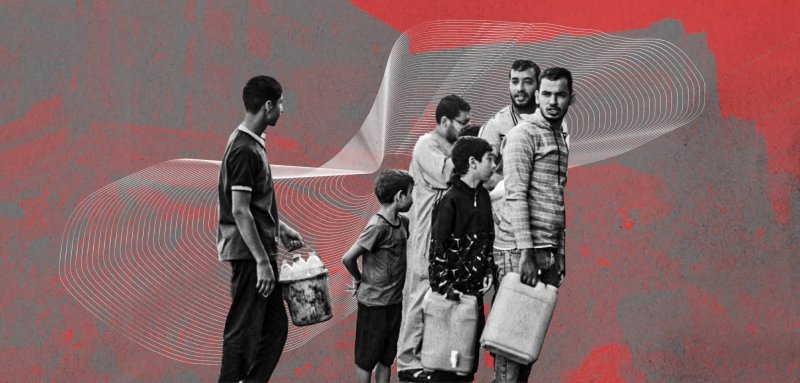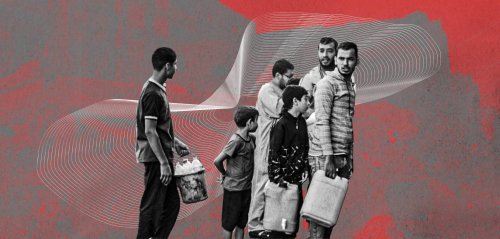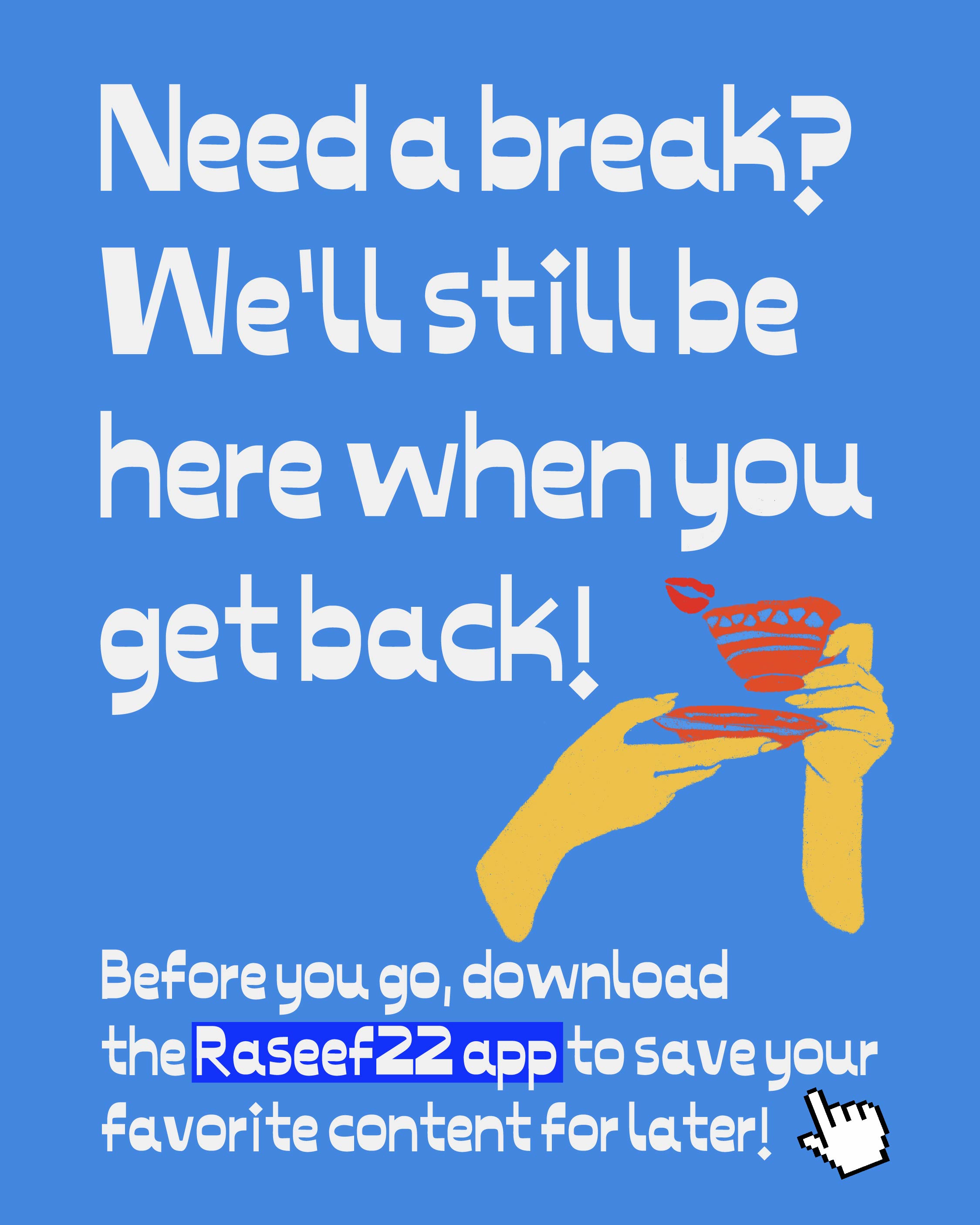“Warning! Managing epidemics will be difficult due to water shortages in light of the ongoing aggression by the occupation.” This brief statement was delivered by the Infection Department of the Palestinian Ministry of Health last Tuesday morning. It was broadcast on Palestine TV and addressed one of the catastrophic aspects looming over the over two million inhabitants of the Gaza Strip. This dire situation unfolds after more than ten days of relentless bombings and the enforced blockade following the commencement of operation “Al-Aqsa Storm” on the morning of October 7th.
Local Palestinian organizations, as well as UN and international institutions operating both within and beyond the confines of the Gaza Strip, are consistently issuing statements and alerts around the clock regarding the gravity of the situation as a result of the unprecedented bombardment of all areas within the strip and the resultant infrastructure destruction, exacerbated by the imposed blockade. Here, we're talking about a region that was already grappling with deteriorating infrastructure due to many years of being under siege.
The situation in Gaza is at risk of becoming a breeding ground for cholera and other diseases.
In addition to the massive human and material losses that have afflicted the strip, characterized as “unprecedented” in any of the preceding conflicts experienced by Palestine, there is a looming threat of numerous health and environmental catastrophes facing the population. This further underscores the urgency of an immediate humanitarian ceasefire, as advocated by all organizations: the establishment of safe corridors, the entry of all essential forms of aid, and the possibility of supporting the medical, health, and other sectors before “time runs out.”
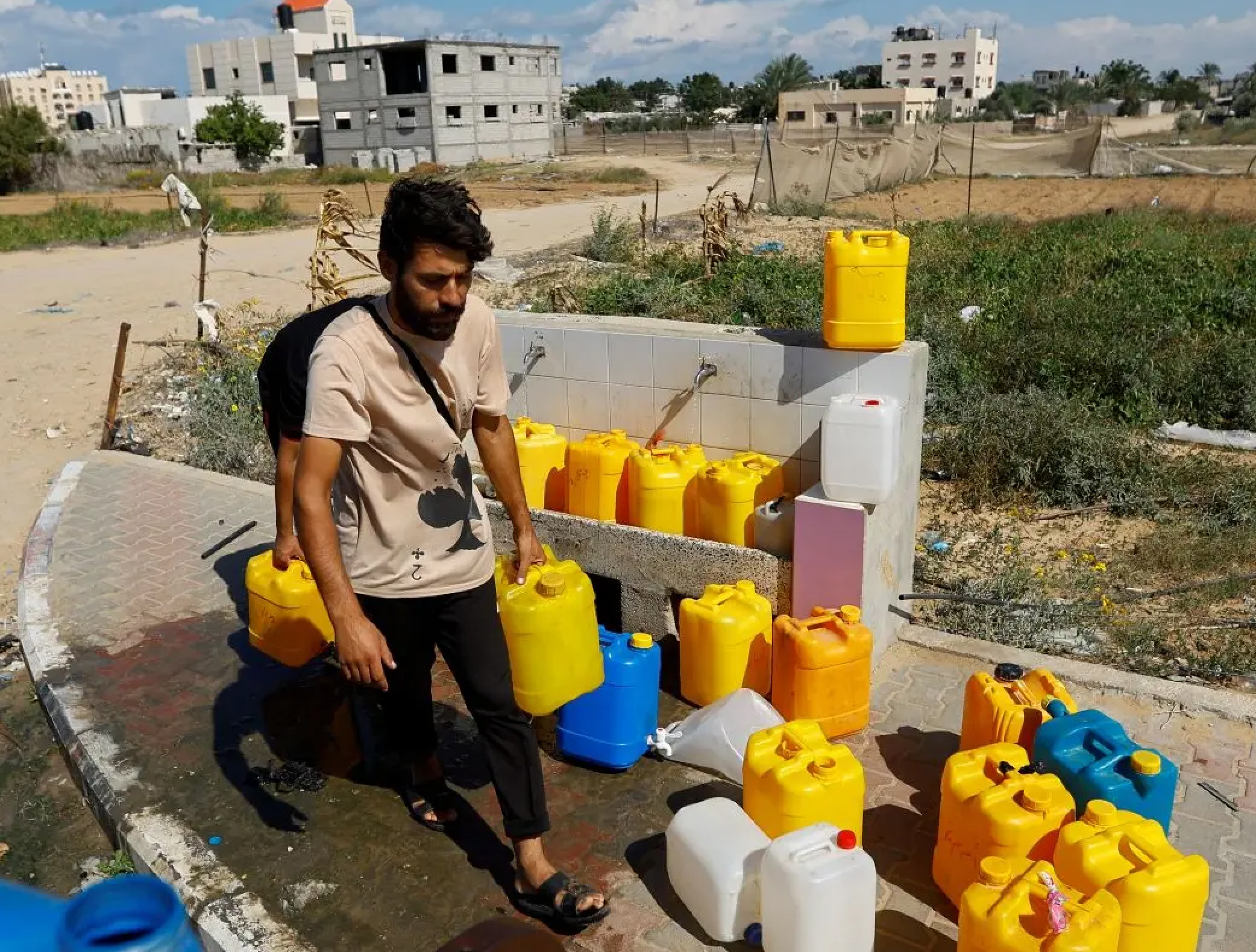 Palestinians queue to gather water amid water shortages in occupied Palestine
Palestinians queue to gather water amid water shortages in occupied Palestine
Water shortages and the spread of diseases
On Tuesday, the United Nations Relief and Works Agency for Palestine Refugees (UNRWA) highlighted that “water scarcity poses a significant challenge in Gaza.” They issued a warning that “without access to water, people will die, and they will be at risk of dehydration and water-borne diseases. This is particularly concerning due to the breakdown of water and sanitation services, exacerbated by the closure of Gaza’s sole seawater desalination plant on Monday.” The International Committee of the Red Cross (ICRC) also noted that “families in Gaza are already grappling with the challenge of accessing clean water.” They further emphasized that parents cannot afford to provide their thirsty children with contaminated water.
The besieged strip is already in the grip of severe water shortages, with over 90 percent of its population lacking access to fresh water. The population primarily relies on groundwater reserves and water supplied by the “Mekorot” company, both of which are controlled by the occupying forces. Additionally, seawater desalination and rainwater collection serve as alternative sources, but their production capacity is limited, and the infrastructure is subpar. Nevertheless, due to the recent military operation, power outages, and the complete cut-off of water supply to Gaza by the occupying authorities, securing water has become next to impossible.
Undoubtedly, all of these factors will have disastrous consequences for the health of the strip’s residents. The issue is not confined to mere “thirst” but extends to the spread of diseases, the ability to maintain personal hygiene, and various other practices. Oxfam pointed out on Tuesday that “the situation in Gaza is poised to become a breeding ground for cholera and other diseases.” Palestinian Minister of Health Mai Al-Kaila stated during a press conference on Wednesday that “water outages and the deterioration of the sewage system elevate the risks of the transmission of communicable diseases.”
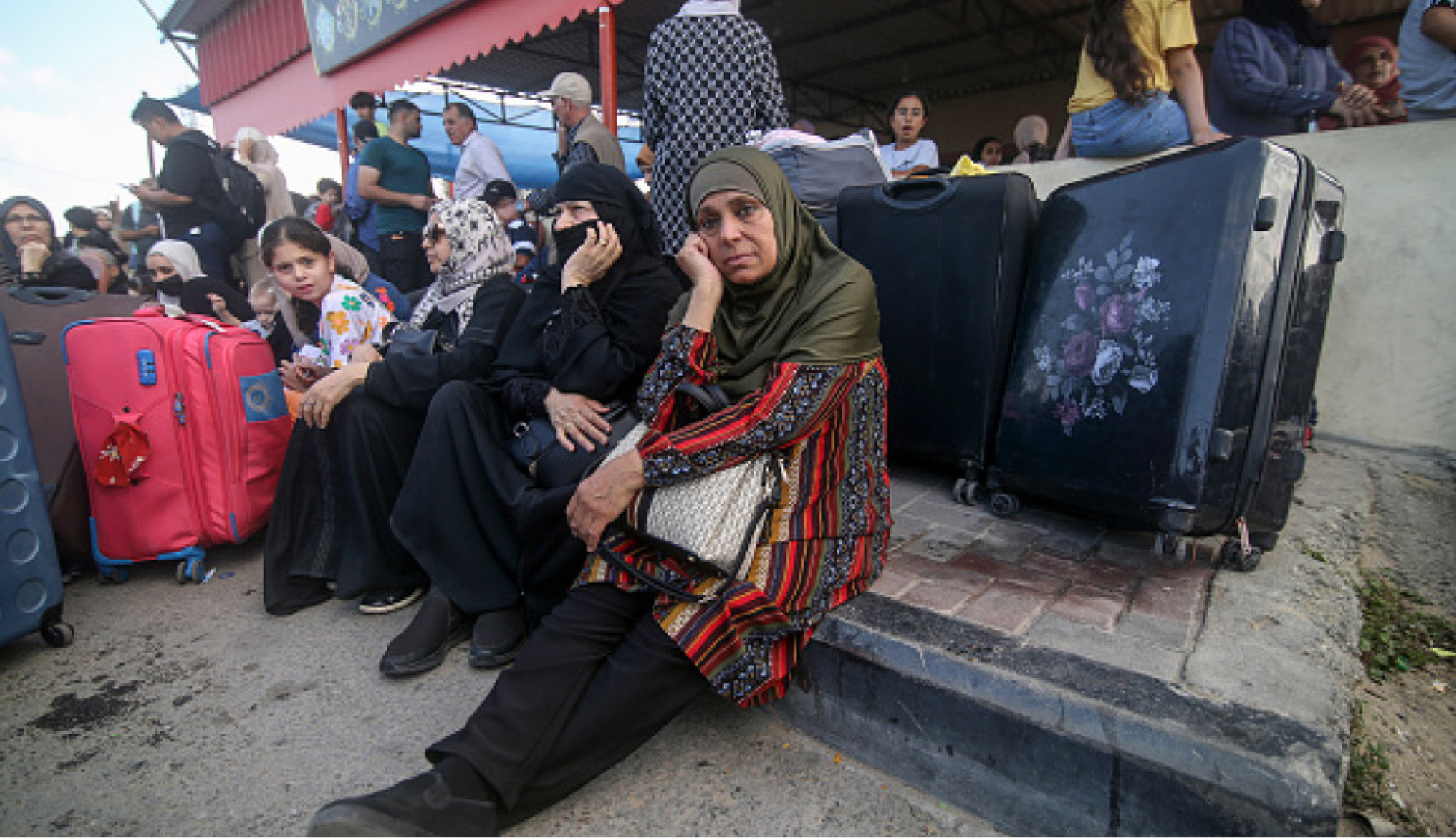 Displaced Palestinians in the besieged Gaza Strip
Displaced Palestinians in the besieged Gaza Strip
Overcrowding inside shelters
A relief worker in the southern Gaza Strip, who opted not to disclose his/her name, told Raseef22, “What concerns us most today is the overcrowding of displaced people in shelter centers, which have extremely limited water resources and sanitary materials. Each center accommodates more than 5,000 displaced individuals.” UNRWA estimates that nearly one million people have been displaced within the Gaza Strip since the beginning of the war.
The worker explains further by stating, “The shelter centers in Gaza City and the northern areas have been deserted because the occupation has forced the UN and international organizations to withdraw. This, in turn, left over 200,000 displaced individuals in these centers without access to services. Furthermore, an estimated 500,000 displaced people have relocated from northern Gaza and Gaza City to the southern regions.”
Aside from the killing, the use of internationally prohibited weapons has long-term health and environmental consequences. It'll take many years to uncover the disasters caused by the weapons used on the health of Gaza's population and quality of life
As per the relief worker, the displaced population are now spread out across various makeshift locations, including the homes of relatives and acquaintances, places of worship, and similar settings. Meanwhile, the existing shelter centers are overwhelmed, and the services offered within them are far below what is needed. He continues, “There is an immense shortage of drinking water and water in general. Hygiene and sterilization materials are entirely absent, and there is also a significant deficit in meeting the needs of women, children, pregnant women, and individuals with chronic diseases.” Oxfam staff noted that “the shelters are not equipped in any way; they are just schools.”
Furthermore, there are severe challenges when it comes to waste collection. This means that waste accumulates and becomes a breeding ground for diseases and poses a significant environmental threat. Various types of waste have not been collected since the first day of the military operations and bombings on the strip. Rodents and insects are spreading in various regions, and residents are complaining about health-related issues as a result. Additionally, the accumulation of corpses and the inability to promptly bury them as quickly as is required raises the risk of epidemic outbreaks due to their decomposition.
As humanitarian workers, the relief worker and his/her colleagues are making efforts to provide the basic necessities for the displaced residents. “However,” he states, “with the restriction on the entry of aid, fuel, medical supplies, and humanitarian assistance, our situation has become dire, and our services are weak.” He concludes, “Up to this point, it is difficult to estimate, but we are on a trajectory toward a major health crisis. If the current situation persists, it is highly likely that we will confront outbreaks of epidemics, skin conditions, and dangerous illnesses such as meningitis.”
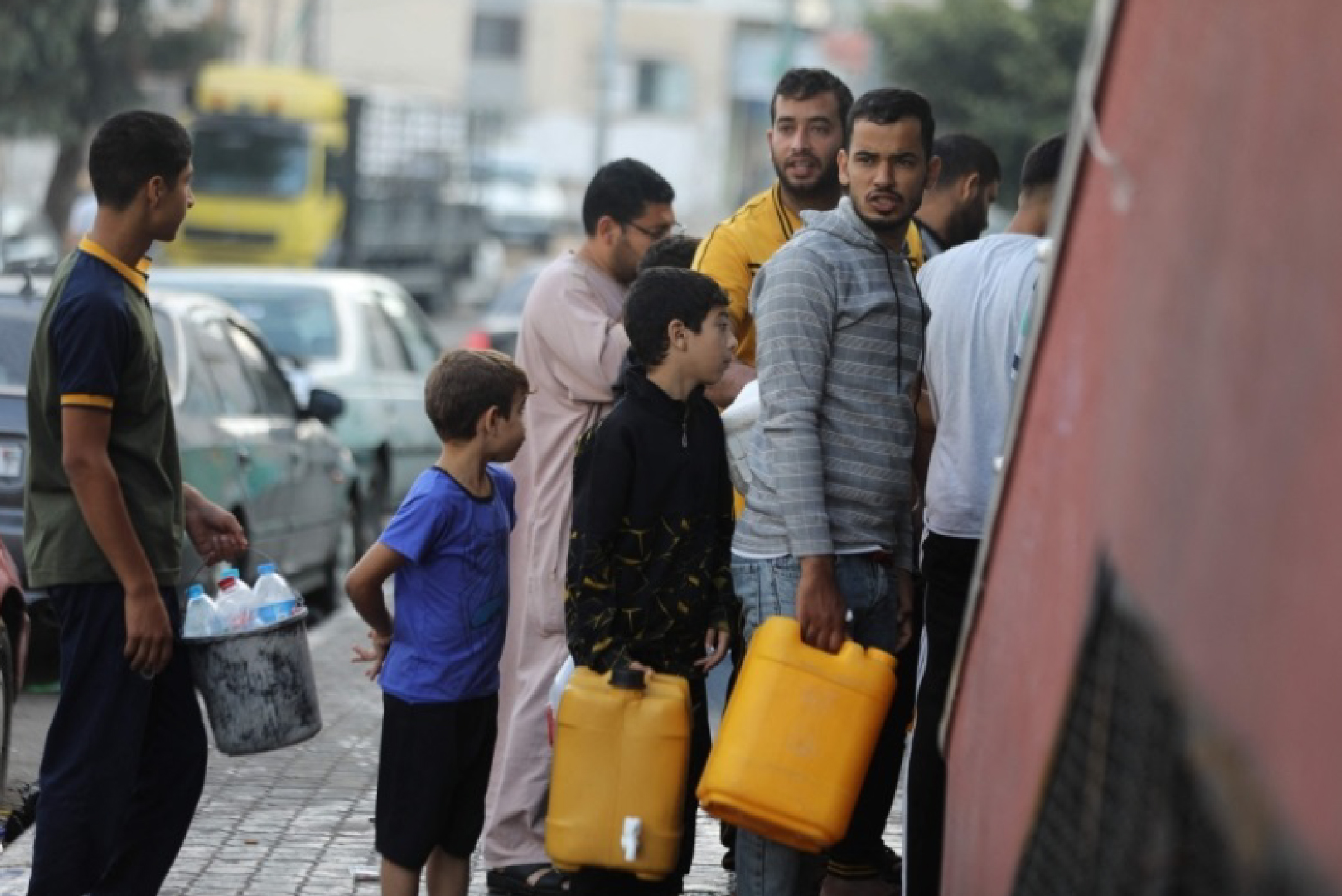 Palestinians queue to gather water amid water shortages in occupied Palestine
Palestinians queue to gather water amid water shortages in occupied Palestine
A destructive combination of weaponry
Since the onset of operation Al-Aqsa Storm, citizens, journalists, and experts have reported that Israel has employed various modern weapons in its airstrikes on Gaza. Some of these weapons are internationally prohibited, including white phosphorus and depleted uranium, a fact corroborated by Human Rights Watch in its report released on October 12. In addition to numerous bombs and explosive munitions with enormous destructive capabilities, many eyewitnesses have described them as “unprecedented.”
Among the accounts regarding the various types of weaponry deployed, there were reports from Palestine TV describing how “a belt of bombs dropped recently by an occupation aircraft created a cloud of unknown composition over the Al-Zaytoun neighborhood in the east of Gaza City.” Additionally, a report from the Euro-Mediterranean Observatory for Human Rights highlighted “unusual injuries in Gaza attributed to the type of weapons utilized.“
“There's an immense shortage of drinking water and water in general. Hygiene and sterilization materials are entirely absent, and there is a significant deficit in meeting the needs of women, children, pregnant women, and individuals with chronic diseases”
In addition to the killing and destruction, the utilization of these weapons has long-term health and environmental impacts. Regarding the use of white phosphorus, it is an extremely flammable incendiary substance known for its severe burning effect on human beings. It is capable of igniting buildings and fields and fire. Furthermore, it has devastating consequences for the environment and plant life and can persist in the soil for many years without breaking down. As for uranium, it is a toxic metal that can have a detrimental impact on various bodily functions when individuals are exposed to it. Its residues and the effects of its radioactivity can contribute to the development of cancers and other severe chronic illnesses. Additionally, it has highly adverse effects on the environment, soil, and living organisms.
 Israeli occupations drops bombs on the besieged Gaza Strip
Israeli occupations drops bombs on the besieged Gaza Strip
It will take many years before the full extent of the catastrophes wrought by the recent war and the weaponry deployed becomes evident in terms of their impact on the health of Gaza’s inhabitants, the quality of life, and the environment in the region. Almost four years ago, the " Journal of Risk and Crisis Management" published a study on soil and water pollution in northern Gaza due to the shelling by Israeli occupation forces, which revealed that pollution levels exceeded the limits set by the World Health Organization. And this war will be no exception.
Raseef22 is a not for profit entity. Our focus is on quality journalism. Every contribution to the NasRaseef membership goes directly towards journalism production. We stand independent, not accepting corporate sponsorships, sponsored content or political funding.
Support our mission to keep Raseef22 available to all readers by clicking here!
Interested in writing with us? Check our pitch process here!
